The mountains of Nantou County attract droves of tourists, but few visitors bother with Nantou City (南投市). The county’s administrative center doesn’t have a railway connection, and its population is a shade below 100,000.
Much of what’s interesting in Nantou City lies inside or within walking distance of Nantou County Culture Campus (南投縣文化園區), the most eye-catching part of which is the County History Exhibition Hall (縣史館), on the corner of Jhangnan Road (彰南路) and Minsheng Street (民生街).
The moment I saw the exhibition hall, I knew it had to be a holdover from the 1895-1945 period of Japanese colonial rule. I found out later it was built in 1937 as part of Tokyo’s campaign to instill Japanese culture and support for militarism in Taiwan via training in kendo and other martial arts. Until 1945, it was known as Nantou Butokuden.
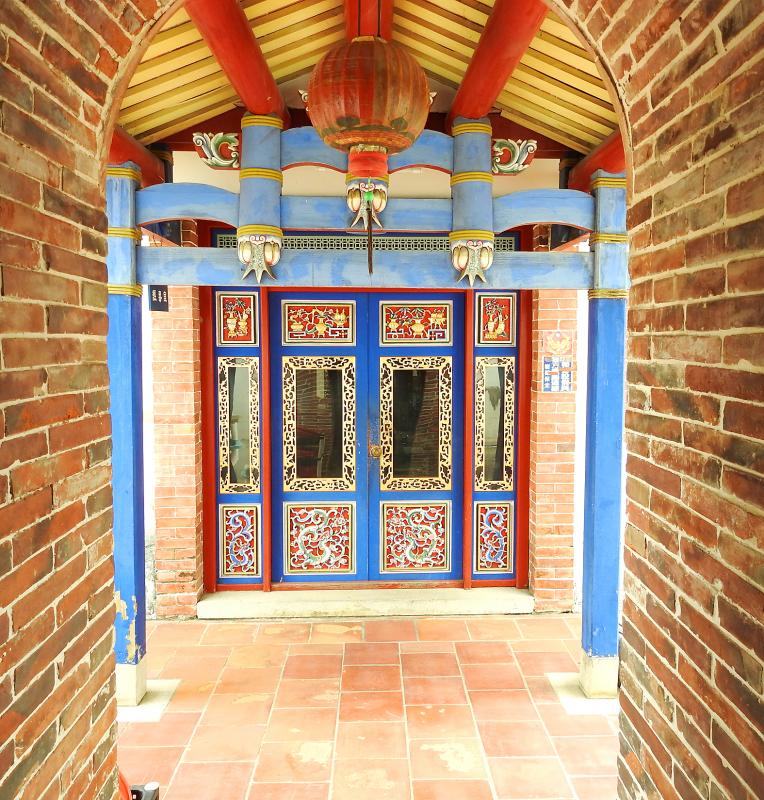
Photo: Steven Crook
After World War II, it housed part of the local government. It looks as good as it does because, after suffering significant damage in the deadly 921 Earthquake, it received a thorough restoration.
The positioning of the adjacent and more modern building, intrigued me. A two-story structure that now houses the Nantou County Artist Information Center (南投縣藝術家資料館), it was situated so that one corner of the former butokuden is extremely close, and pointing directly into it.
I’ve been told that, according to the notions of fengshui, having the sharp edge of another building aiming at yours is impermissible. Was this done because land was in such short supply? If the intention was to hide something that had been built by the colonists, a simple wall would’ve been more effective.
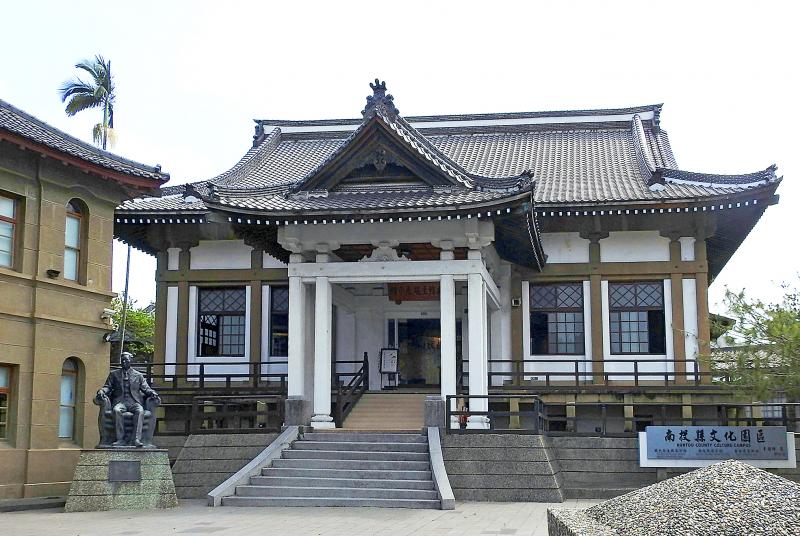
Photo: Steven Crook
In front of the Nantou County Artist Information Center (which will probably only appeal to art enthusiasts), there’s a bronze statue of Chang Shen-chieh (張深切, 1904-1965), a literary theorist and philosopher. Educated in Taiwan, Japan and China, then imprisoned by the Japanese because of his pro-Chinese Nationalist Party activism in Taiwan, he later worked in Beijing for the pro-Japan puppet regime led by Wang Jingwei (汪精衛).
Getting in trouble was something of a habit for Chang. Arrested then freed by the Japanese near the end of the war, he returned to Taiwan, but had to go into hiding in the wake of the 228 Incident. He was cleared after several months on the run, but in 1954 a periodical he’d launched was banned after upsetting the authorities.
Unfortunately, I didn’t find the displays inside the County History Exhibition Hall half as interesting as Chang’s life story. Among the exhibits there’s some information about the county’s indigenous inhabitants, a few Hakka clothes and shoes, and an ancient-looking dugout canoe once used by members of the Thao (邵) Aboriginal community on Sun Moon Lake (日月潭).
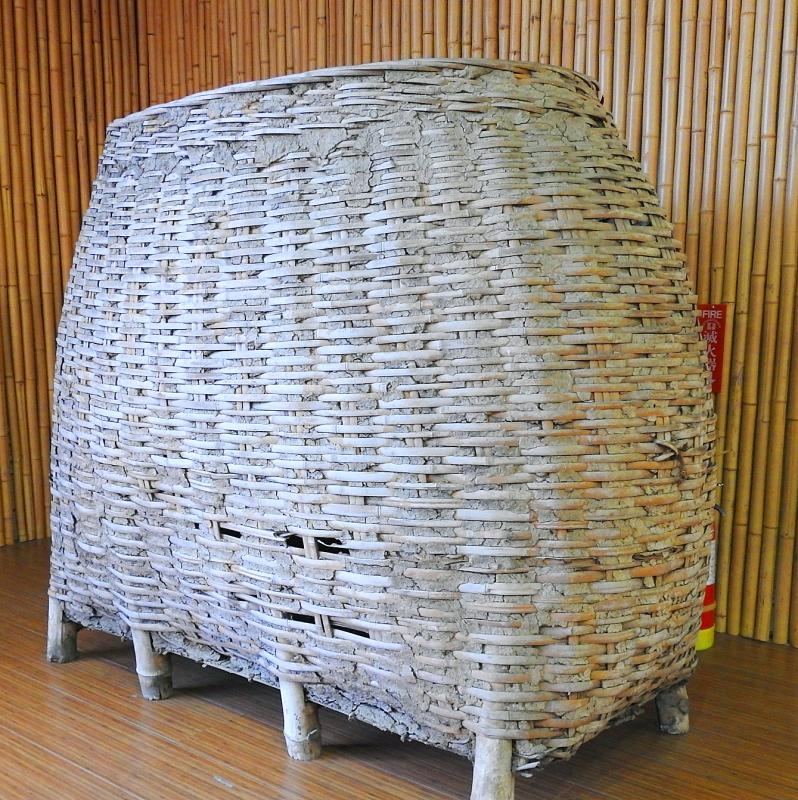
Photo: Steven Crook
BAMBOO MUSEUM
Walking southwest and slightly uphill for a few minutes brought me to Nantou Bamboo Museum (南投縣竹藝博物館), on the first floor of the building that contains the county government’s Cultural Affairs Bureau at 135 Jianguo Road (建國路). Like the County History Exhibition Hall, it’s open from 9am to 5pm every day except Monday. Admission is free at both places.
At Nantou Bamboo Museum, as at the history hall, none of the panels or labels are in languages other than Chinese. Even so, the range of items made using bamboo can’t fail to impress. Bamboo is, after all, an incredibly versatile material. The stems can be used to make cages, huts and pigpens; the leaves are used to wrap food; and the shoots can be eaten.
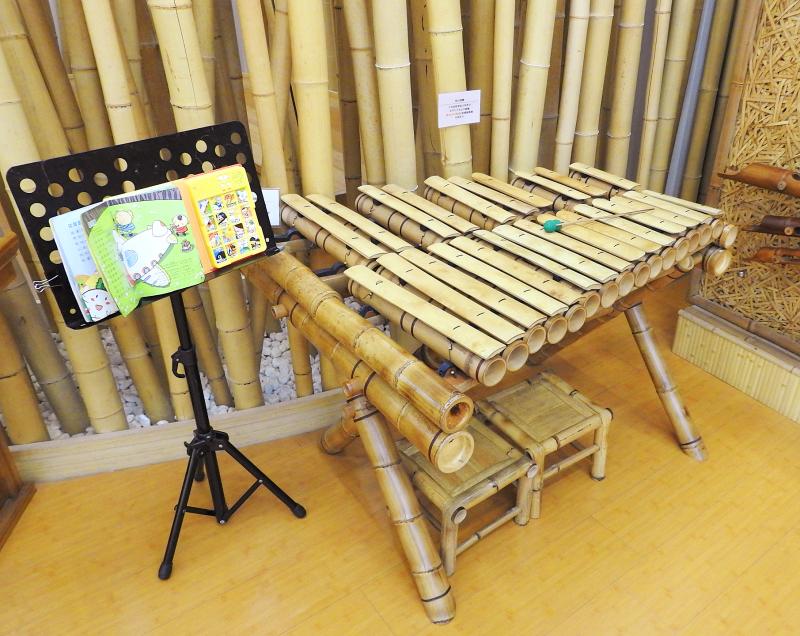
Photo: Steven Crook
Bamboo still covers a significant proportion of the Taiwanese countryside. About 60 different species occur naturally, and they vary greatly in height and girth.
In addition to household furniture and common utensils, the museum displays: babies’ cribs; yokes for water buffalo; cylinders used to trap fish in creeks; a replica of a household rice granary; a three-level tiffin box; pillows; games, toys and musical instruments.
If bamboo art really floats your boat — or you want to buy some quality souvenirs — consider also visiting the National Taiwan Craft Research and Development Institute (台灣工藝研究發展中心, www.ntcri.gov.tw) while you’re in this part of Taiwan.
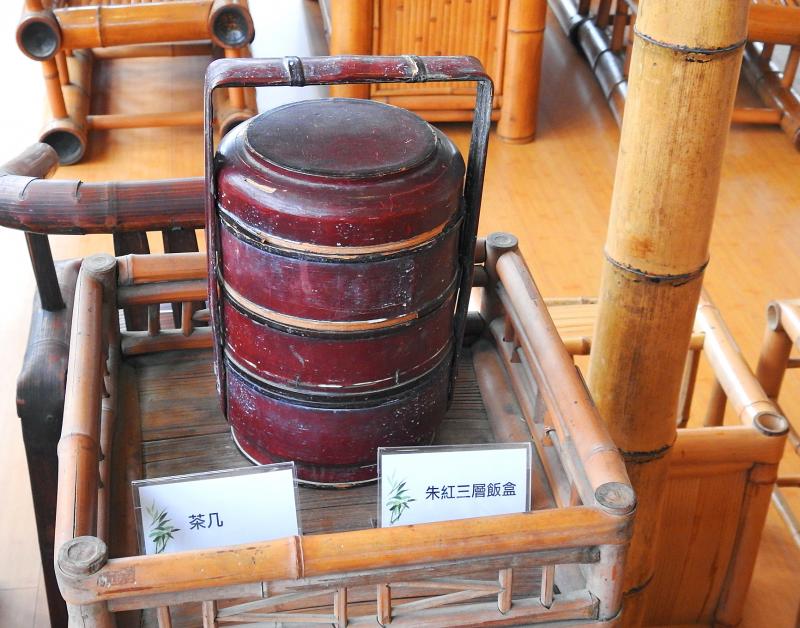
Photo: Steven Crook
The institute, which is about 10km north of the museum in Caotun Township (草屯), was set up by the government in 1954 to help artisans improve the quality and marketability of their products. One building contains several workshops, while another sells some pricey yet classy items. It’s closed on Mondays.
Lantian Tutorial Academy (藍田書院) at 140 Wenchang Street (文昌街) in Nantou City, has almost 200 years of history. Originally established in Caotun in 1831, the academy’s original building was weakened by an earthquake in 1845, then further damaged by heavy rains. It was relocated to its present site in 1864. Current opening hours are 6am to 10pm daily.
Just as they did long ago, students and scholars come here to burn incense to Confucius, the most famous sage in Chinese history, and Wenchang Dijun (文昌帝君), a god of culture and literature and the patron deity of those about to sit academic examinations.

Photo: Steven Crook
Taken over by an elementary school during the Japanese era, then occupied by military families who’d followed Chiang Kai-shek (蔣介石) to Taiwan in 1949, it was slowly restored to its original function and beauty, thanks to dollops of government money.
A budget of NT$55 million was approved in 1993, and another NT$12 million was provided to fund repairs after the 921 Earthquake. These tax dollars have been well spent; the place looks splendid. When I’m next in Nantou City, I’ll be sure to return to this landmark.
Steven Crook has been writing about travel, culture, and business in Taiwan since 1996. He is the co-author of A Culinary History of Taipei: Beyond Pork and Ponlai, and author of Taiwan: The Bradt Travel Guide, the third edition of which has just been published.

Many people noticed the flood of pro-China propaganda across a number of venues in recent weeks that looks like a coordinated assault on US Taiwan policy. It does look like an effort intended to influence the US before the meeting between US President Donald Trump and Chinese dictator Xi Jinping (習近平) over the weekend. Jennifer Kavanagh’s piece in the New York Times in September appears to be the opening strike of the current campaign. She followed up last week in the Lowy Interpreter, blaming the US for causing the PRC to escalate in the Philippines and Taiwan, saying that as

Taiwan can often feel woefully behind on global trends, from fashion to food, and influences can sometimes feel like the last on the metaphorical bandwagon. In the West, suddenly every burger is being smashed and honey has become “hot” and we’re all drinking orange wine. But it took a good while for a smash burger in Taipei to come across my radar. For the uninitiated, a smash burger is, well, a normal burger patty but smashed flat. Originally, I didn’t understand. Surely the best part of a burger is the thick patty with all the juiciness of the beef, the

This year’s Miss Universe in Thailand has been marred by ugly drama, with allegations of an insult to a beauty queen’s intellect, a walkout by pageant contestants and a tearful tantrum by the host. More than 120 women from across the world have gathered in Thailand, vying to be crowned Miss Universe in a contest considered one of the “big four” of global beauty pageants. But the runup has been dominated by the off-stage antics of the coiffed contestants and their Thai hosts, escalating into a feminist firestorm drawing the attention of Mexico’s president. On Tuesday, Mexican delegate Fatima Bosch staged a

The ultimate goal of the Chinese Communist Party (CCP) is the total and overwhelming domination of everything within the sphere of what it considers China and deems as theirs. All decision-making by the CCP must be understood through that lens. Any decision made is to entrench — or ideally expand that power. They are fiercely hostile to anything that weakens or compromises their control of “China.” By design, they will stop at nothing to ensure that there is no distinction between the CCP and the Chinese nation, people, culture, civilization, religion, economy, property, military or government — they are all subsidiary